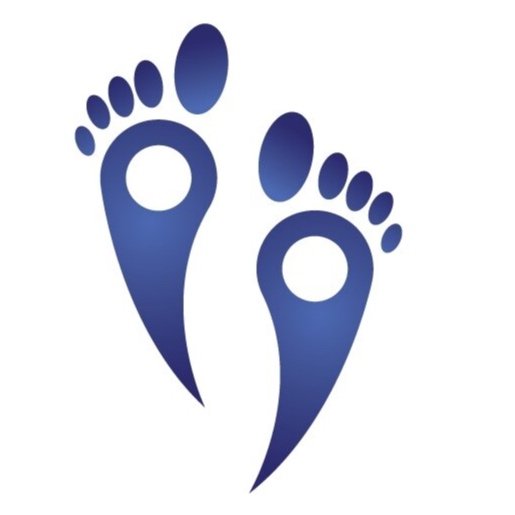How to prevent running or marathon injuries?
Every year, thousands of runners train hard and make last-minute preparations to compete in the world's largest single yearly fundraising event, the London Marathon.
However, in addition to the success stories and fundraising celebrations, there are runners who suffer injuries both before and during the race, causing suffering and disappointment.
Both rookie and experienced runners are vulnerable, the former because their muscles aren't used to operating in this manner, and the latter because they are tempted to push themselves too far.
It's important to be aware of the most frequent running injuries to avoid, as well as some of the best techniques to avoid them.
COMMON RUNNING INJURIES
There are 8 prevalent injuries among runners, according to research into running-related musculoskeletal injuries.
According to a 2015 review of studies, the knees, hips, and feet are the most common injury areas for runners. The review breaks down the location-specific incidence of running injuries as follows:
Knees: 7.2 to 50 percent
Lower leg: 9.0 to 32.2 percent
Upper leg: 3.4 to 38.1 percent
Foot: 5.7 to 39.3 percent
Ankles: 3.9 to 16.6 percent
Hips, pelvis, or groin: 3.3 to 11.5 percent
Lower back: 5.3 to 19.1 percent
The following are at the top of the list:
Patellofemoral pain syndrome (runners knee). This is the most frequent overuse injury in runners. It is characterised by intense, severe, or dull pain at the front of the knee, behind the kneecap, or surrounding the knee. It can be caused by a variety of factors, including swelling under the kneecap. You should contact a doctor right immediately if the pain is severe or the knee is swollen. Rest the knee and apply ice to reduce swelling if necessary. Gentle stretching exercises should be tried first, and you should not run again until the pain has subsided. If the discomfort persists after a week of rest, you should see a doctor.
IT band syndrome. This is a long piece of connective tissue that runs from your outer hip to your knee. This band of tissue helps stabilise your knee when you’re walking or running. It is caused by repetitive friction of the IT band rubbing against your leg bone. It’s very common in runners due to tight IT bands. Weak gluteal muscles, abdominals, or hips may also contribute to this condition. It causes sharp pain on the outer side of your leg, usually just above your knee and it can be tender to the touch. The pain often gets worse when you bend your knee.
Shin Splint. It is a common and debilitating injury among runners that is caused by overuse. It produces pain in the lower two-thirds of the shin and can lead to stress fractures if left untreated. There are several possible causes, including stress, weakness, and tendon inflammation.
Hamstring injuries. Hamstrings help decelerate your lower leg during the swing phase of your running cycle. If your hamstrings are tight, weak, or tired, they may be more prone to injury. Unlike sprinters, it’s fairly uncommon for distance runners to experience a sudden hamstring tear. Most of the time, distance runners experience sprains that come on slowly and are caused by repetitive small tears in the fibers and connective tissue of the hamstring muscle. If you have a hamstring injury, you may experience: dull pain in the back of your upper leg.
Achilles tendonitis — the Achilles tendon is the body's strongest. It is responsible for connecting the calf muscle to the heel bone. It can withstand extremely high loads, but little damage can occur during use, and if the tendon is not given enough time to heal, damage can build up, leading to Achilles tendinopathy. Pain, weakness, stiffness, and edoema are some of the symptoms. Exercises to stretch and strengthen muscles, shockwave therapy, and autologous blood infusions are all part of the treatment. During rehabilitation, orthotics may give pain alleviation.
Plantar fasciitis - During walking and running, the plantar fascia supports the arch of the foot and absorbs dynamic shock. Plantar fascilitis is a condition that occurs when the foot becomes inflamed and develops micro-tears as a result of overuse and poor biomechanics. This causes pain under the heel, which is most intense in the morning and is usually worse near the inside corner. Stretching and strengthening exercises, as well as the use of orthotics, can be beneficial.
Ankle sprain. Usually caused by overstretching the ligaments between your leg and ankle. Sprains often happen when you land on the outer part of your foot and roll your ankle over. Common symptoms associated with an ankle sprain include: discoloration, pain, swelling, and bruising and inability to take weight through foot.
Outer side of Hip Pain - Greater Trochanter Pain Syndrome (GTPS). Runners feels pain on the outer side of hip during and after running. The greater trochanter is the protuberance on the head of the thigh bone (femur); to find it your GT (as we will now refer to it) put your hands on your waist and then move them a fraction down – that’s your pelvis you’re now feeling. Keep moving downwards and eventually you will feel the top of your thigh bone sticking out. That’s your greater trochanter, and if touching it makes you jump you could well be suffering from GTPS. For runners suffering from GTPS, the most painful moment during the run will be when the foot of the affected side lands and the body passes over it.
INJURY PREVENTION
There are some easy common sense actions you may take to lower your risk of damage from any sort of running injury:
Listen to your body — Pain, discomfort, and soreness are signs that you're doing too much or not using your body properly. Pay attention to these indications and cease running for a few days until the soreness subsides.
Gradually increase your workload — as tempting as it may be, don't try to do too much too fast. It takes time for your body to adapt and strengthen. Your legs will be supported all the way down if you strengthen your core and hip muscles, which will help you avoid knee, hip, and ankle ailments.
Warm up and stretch — stretching should be a part of your warm-up regimen. If you've just finished a long run (15 miles or more), don't stretch right away because your muscles will be filled of micro-tears, which will be aggravated by stretching right away.
Rest, Ice, Compression, and Elevation (RICE)— If you have joint pain or muscle aches, remember to use RICE to relieve pain, reduce swelling, and protect damaged tissues.
If you think you've hurt yourself during training, don't ignore it and keep going since you could end up with a far more serious and long-term injury. Speak with us about obtaining an accurate diagnosis so that you can properly treat the illness.
To book for an appointment you can call our normal reception line, 0121 285 5656 or email direct to hello@thepodiatryclinics.co.uk requesting an appointment. Please include your name, date of birth, your address and GP contact details.
You will be sent a form to complete and forward back to us or bring along on the day.
References:
PLoS One. 2015; 10(2): e0114937. Published online 2015 Feb 23. doi: Injuries in Runners; A Systematic Review on Risk Factors and Sex Differences. Maarten P. van der Worp, 1 , 2 , 3 ,* Dominique S. M. ten Haaf, 2 Robert van Cingel, 2 , 4 Anton de Wijer, 1 , 5 Maria W. G. Nijhuis-van der Sanden, 3 , 6 and J. Bart Staal




